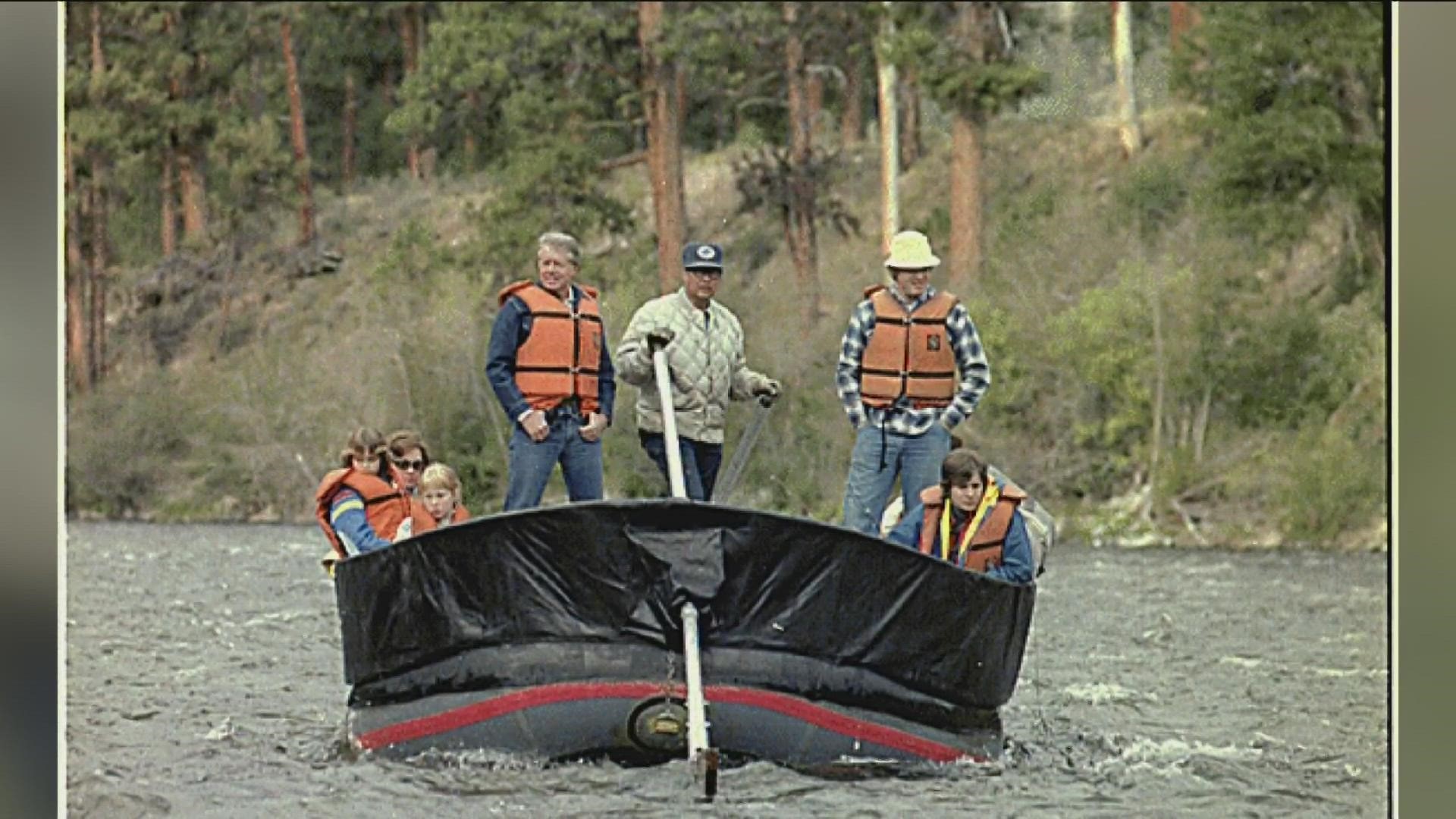IDAHO, USA — Former U.S. President Jimmy Carter, 98, is now receiving hospice care at his home in Georgia.
"Carter decided to spend his remaining time at home with his family and receive hospice care instead of additional medical intervention. He has the full support of his family and his medical team," The Carter Center said in a news release.
Carter, who served as the 39th president, was elected in 1976. During Carter's political career, he visited Idaho three times — in 1974, 1976 and 1978.
"I grow peanuts, which grow under the ground; I know you grow potatoes under the ground. I feel a kinship there because I am a farmer," Carter said during his 1976 visit to Idaho.
President Carter was also friends with longtime Idaho governor, Cecil D. Andrus. Andrus went on to serve as U.S. Secretary of the Interior during the Carter Administration.
"Among all the governors in the nation, Cecil Andrus has probably been as close to me as any other," Carter said.
Marc Johnson, Andrus' former Chief of Staff, said the two men took an instant liking to each other and had a common philosophy about government.
"They both were kind of a new generation of Democratic leaders," he said.
During Carter's second visit in 1976, he was running for president and trying to secure the Democratic nomination. The president said he came to the Gem State to accumulate delegates, learn about the country, and "to tie myself as closely as possible to the Idaho voters."
After becoming president, Carter's friendship with Andrus led to a historic Idaho adventure in August of 1978. The two, along with Carter's family, rafted the Middle Fork of the Salmon River.
"The backstory, at least as Governor Andrus used to tell the story, was that he'd gone to the White House for some particular meeting with President Carter and had suggested to him that it would be great if he got out of Washington, DC, during the summertime and take a vacation in the West."
It was a trip of a lifetime that made national headlines. Johnson said before then, not many presidents took such remote vacations.
"The whole White House press corps, of course, came to Idaho to follow this rather unusual trip," Johnson said. "I mean, here you have the president of the United States disappearing into the Idaho backcountry for three days."
Johnson said the trip drew eyes to Idaho and was also "good public relations" for the Carter Administration — partly because it crossed party lines.
"I don't remember there were any demonstrators or any negative words said about it," he said. "It was like the state was welcoming a president of the United States to come to Idaho. Seems like a simpler or maybe even a little better time than some of our politics today."
Not even two years after the trip, President Carter signed the Central Idaho Wilderness Act, now known as the Frank Church — River of No Return Wilderness.
It protects the Middle Fork of the Salmon and much of the surrounding area.
"[The Salmon trip] had to have made a profound impact on President Carter," Johnson said. "[It's] somewhat symbolic or interesting that he visited the area and then had the opportunity not too many years later to sign the legislation."
Watch more Local News:
See the latest news from around the Treasure Valley and the Gem State in our YouTube playlist:

